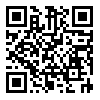Sat, Nov 29, 2025
[Archive]
Volume 21, Issue 11 (November 2023)
IJRM 2023, 21(11): 943-948 |
Back to browse issues page
Download citation:
BibTeX | RIS | EndNote | Medlars | ProCite | Reference Manager | RefWorks
Send citation to:



BibTeX | RIS | EndNote | Medlars | ProCite | Reference Manager | RefWorks
Send citation to:
Vahidi S, Abedinzadeh M, Rahavian A, Mirjalili A, Sadeghi A, Karami H et al . Does Clomiphene citrate administration increase the success rate of microdissection testicular sperm extraction in non-obstructive azoospermic men? A cross-sectional study. IJRM 2023; 21 (11) :943-948
URL: http://ijrm.ir/article-1-2725-en.html
URL: http://ijrm.ir/article-1-2725-en.html
Serajoddin Vahidi *1 

 , Mehdi Abedinzadeh2
, Mehdi Abedinzadeh2 

 , Amirhossein Rahavian3
, Amirhossein Rahavian3 

 , Alimohammad Mirjalili2
, Alimohammad Mirjalili2 

 , Ali Sadeghi4
, Ali Sadeghi4 

 , Hormoz Karami2
, Hormoz Karami2 

 , Saeid Abouei3
, Saeid Abouei3 




 , Mehdi Abedinzadeh2
, Mehdi Abedinzadeh2 

 , Amirhossein Rahavian3
, Amirhossein Rahavian3 

 , Alimohammad Mirjalili2
, Alimohammad Mirjalili2 

 , Ali Sadeghi4
, Ali Sadeghi4 

 , Hormoz Karami2
, Hormoz Karami2 

 , Saeid Abouei3
, Saeid Abouei3 


1- Andrology Research Center, Yazd Reproductive Science Institute, Shahid Sadoughi University of Medical Sciences, Yazd, Iran. , vahidi.seraj@gmail.com
2- Department of Urology, Shahid Sadoughi University of Medical Sciences, Yazd, Iran.
3- Andrology Research Center, Yazd Reproductive Science Institute, Shahid Sadoughi University of Medical Sciences, Yazd, Iran.
4- Department of Surgical Technology, Faculty of Paramedical, Shahid Sadoughi University of Medical Sciences, Yazd, Iran.
2- Department of Urology, Shahid Sadoughi University of Medical Sciences, Yazd, Iran.
3- Andrology Research Center, Yazd Reproductive Science Institute, Shahid Sadoughi University of Medical Sciences, Yazd, Iran.
4- Department of Surgical Technology, Faculty of Paramedical, Shahid Sadoughi University of Medical Sciences, Yazd, Iran.
Abstract: (1176 Views)
Background: Clomiphene citrate (CC) has been suggested to increase the chance of sperm retrieval with microdissection testicular sperm extraction (micro-TESE).
Objective: This study aimed to evaluate the effect of CC on micro-TESE results, due to the great controversy in this regard.
Materials and Methods: 112 participants were included in this cross-sectional study and were divided into a case (n = 54) and a control group (n = 58) diagnosed with non-abstractive azoospermia. The case group received 25 mg of CC daily for 3 months, while the control group did not receive anything. All participants underwent micro-TESE by an andrologist, and at the end, the results were compared between groups. Hormone tests, including follicle-stimulating hormone, luteinizing hormone, testosterone, and prolactin were analyzed.
Results: The mean age of participants was the same in the case and the control groups, and no significant relationship was observed between the 2 groups (p = 0.16). 25.9% of sperm and 31.0% of sperm were observed and extracted in the CC-treated and the control group, respectively.
Conclusion: Our findings showed that after receiving CC, the number of sperm extraction did not increase but it rather decreased. However, the initial level of hormones such as testosterone, follicle-stimulating hormone, luteinizing hormone, and prolactin, and the men's age, testicle size, smoking, and opium addiction, underlying diseases had no significant relationship in the 2 groups and did not affect the results.
Objective: This study aimed to evaluate the effect of CC on micro-TESE results, due to the great controversy in this regard.
Materials and Methods: 112 participants were included in this cross-sectional study and were divided into a case (n = 54) and a control group (n = 58) diagnosed with non-abstractive azoospermia. The case group received 25 mg of CC daily for 3 months, while the control group did not receive anything. All participants underwent micro-TESE by an andrologist, and at the end, the results were compared between groups. Hormone tests, including follicle-stimulating hormone, luteinizing hormone, testosterone, and prolactin were analyzed.
Results: The mean age of participants was the same in the case and the control groups, and no significant relationship was observed between the 2 groups (p = 0.16). 25.9% of sperm and 31.0% of sperm were observed and extracted in the CC-treated and the control group, respectively.
Conclusion: Our findings showed that after receiving CC, the number of sperm extraction did not increase but it rather decreased. However, the initial level of hormones such as testosterone, follicle-stimulating hormone, luteinizing hormone, and prolactin, and the men's age, testicle size, smoking, and opium addiction, underlying diseases had no significant relationship in the 2 groups and did not affect the results.
Type of Study: Original Article |
Subject:
Fertility & Infertility
Send email to the article author
| Rights and permissions | |
 |
This work is licensed under a Creative Commons Attribution-NonCommercial 4.0 International License. |




